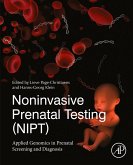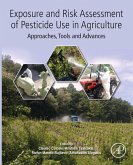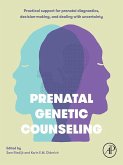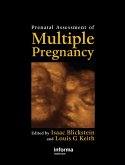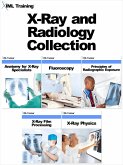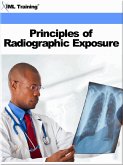Prenatal Alcohol Exposure: A Clinician's Guide provides comprehensive, clinically relevant information for mental health practitioners and professionals in educational, vocational, legal, child welfare, and correctional settings who may encounter individuals with a "hidden disability" that compromises their success in career, family, and life. The author is a noted scholar and clinician in the field of fetal alcohol spectrum disorder (FASD), and the book fills a glaring gap in the training literature on prenatal alcohol exposure (PAE). Lacking a diagnosis and the professional assistance they so desperately need, people with FASD can experience great frustration and suffering. Many are institutionalized unnecessarily or have entered the criminal justice system. Drawing upon evidence-based research and employing the most current assessment techniques and treatment strategies, the book aims to help the reader understand that pathophysiology is key to interpreting outcomes and that the effects of PAE vary according to the differential impacts of other biopsychosocial factors. The book emphasizes the need for individual clinicians to develop expert knowledge of PAE, rather than create new alternative services or systems to cater to these patients.
Beautifully written and clinically rich, the guide offers in-depth coverage of essential topics: ¿ Through the use of clinical vignettes, the book helps clinicians work through differential diagnoses, recognize the "red flags" that individuals with PAE may exhibit, and implement evidence- and practice-based modifications to care that help patients improve and even thrive.¿ Over the five decades that the complications of PAE have been recognized in the scientific literature, the terms used to describe the entities have changed. The book helps readers understand this nosological evolution and recognize the bridging of FASD in the interface of PAE and its mental disorder sequelae.¿ The section on assessment and diagnosis covers the latest techniques, including neuroimaging and psychological testing, both of which are promising although not yet reliable, and laboratory testing for general screening, diagnostic confirmation, monitoring, and risk management.¿ Chapters are included on pharmacological intervention, which reviews both medications currently in use and those requiring further study and psychological treatment, which focuses on interventions to replace deficits with techniques that correct affect regulation, executive dysfunction, and impulsivity.¿ Strategies and programs that enhance quality of life, ensure interdependence, and are socially responsible and inclusive are explored in a chapter on the "critical success factors."
Proper diagnosis of FASD is fraught with difficulty, and clinicians need specialized knowledge to navigate the red herrings and red flags. Prenatal Alcohol Exposure: A Clinician's Guide equips professionals with the requisite skills and clinical acumen to identify individuals with PAE and provide them with optimum care.
Beautifully written and clinically rich, the guide offers in-depth coverage of essential topics: ¿ Through the use of clinical vignettes, the book helps clinicians work through differential diagnoses, recognize the "red flags" that individuals with PAE may exhibit, and implement evidence- and practice-based modifications to care that help patients improve and even thrive.¿ Over the five decades that the complications of PAE have been recognized in the scientific literature, the terms used to describe the entities have changed. The book helps readers understand this nosological evolution and recognize the bridging of FASD in the interface of PAE and its mental disorder sequelae.¿ The section on assessment and diagnosis covers the latest techniques, including neuroimaging and psychological testing, both of which are promising although not yet reliable, and laboratory testing for general screening, diagnostic confirmation, monitoring, and risk management.¿ Chapters are included on pharmacological intervention, which reviews both medications currently in use and those requiring further study and psychological treatment, which focuses on interventions to replace deficits with techniques that correct affect regulation, executive dysfunction, and impulsivity.¿ Strategies and programs that enhance quality of life, ensure interdependence, and are socially responsible and inclusive are explored in a chapter on the "critical success factors."
Proper diagnosis of FASD is fraught with difficulty, and clinicians need specialized knowledge to navigate the red herrings and red flags. Prenatal Alcohol Exposure: A Clinician's Guide equips professionals with the requisite skills and clinical acumen to identify individuals with PAE and provide them with optimum care.
Dieser Download kann aus rechtlichen Gründen nur mit Rechnungsadresse in A, D ausgeliefert werden.



